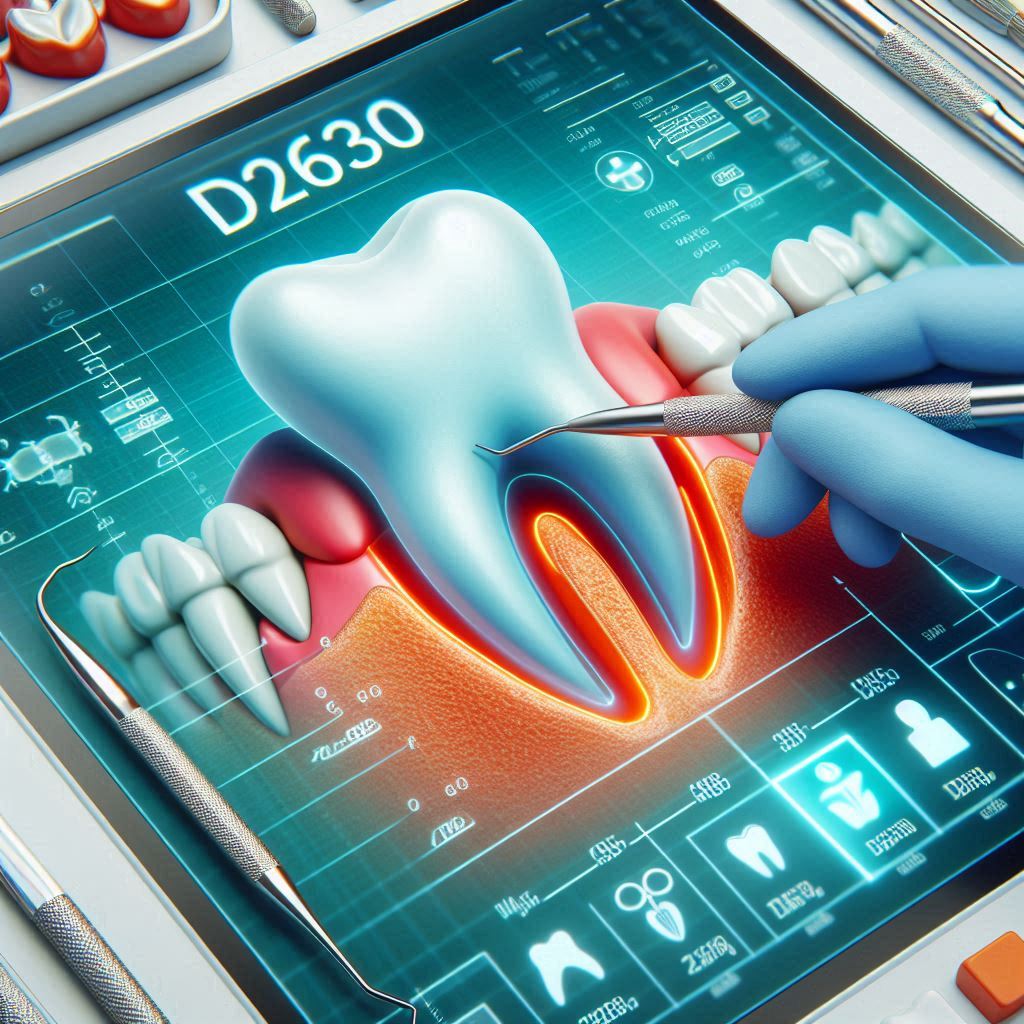D2630 Dental Code: Crowns for Primary Teeth
Dental procedures for children require special consideration, especially when dealing with severely decayed or damaged primary (baby) teeth. The D2630 dental code refers to the placement of a crown on a primary tooth, typically using prefabricated stainless steel or zirconia crowns. This procedure is crucial in pediatric dentistry to preserve tooth function, prevent further decay, and maintain proper spacing for permanent teeth.
In this comprehensive guide, we will explore everything you need to know about the D2630 dental code, including its applications, benefits, procedure details, cost considerations, and alternatives. Whether you’re a dental professional, a parent, or a patient, this article will provide valuable insights into this essential pediatric dental treatment.

2. Understanding the D2630 Dental Code
Definition and Purpose
The D2630 dental code is classified under the American Dental Association (ADA) Code on Dental Procedures and Nomenclature (CDT). It specifically refers to:
“D2630 – Crown – primary tooth – prefabricated stainless steel or other approved crown.”
This means it covers the placement of a pre-made crown (not custom-made) on a baby tooth. The primary goal is to restore function, prevent further decay, and maintain space for the permanent tooth’s eruption.
When Is It Used?
A dentist may recommend a D2630 crown in cases where:
- A primary tooth has extensive decay that cannot be restored with a filling.
- The tooth has undergone a pulpotomy (baby root canal) and needs structural reinforcement.
- The tooth is fractured or weakened due to trauma.
- The tooth is at high risk of further decay due to poor oral hygiene or diet.
3. Primary Teeth vs. Permanent Teeth: Why Crowns Matter
Primary teeth, though temporary, play a critical role in:
- Chewing and nutrition
- Speech development
- Guiding permanent teeth into proper position
Premature loss of primary teeth can lead to:
- Misalignment of permanent teeth
- Speech difficulties
- Bone loss in the jaw
Thus, preserving a decayed primary tooth with a D2630 crown is often a better long-term solution than extraction.
4. Types of Crowns Used Under D2630
| Crown Type | Material | Pros | Cons |
|---|---|---|---|
| Stainless Steel (SSC) | Metal alloy (nickel/chromium) | Durable, cost-effective, quick placement | Metallic appearance, may cause allergies |
| Zirconia | Ceramic (tooth-colored) | Aesthetic, biocompatible, strong | More expensive, less flexibility |
| Strip Crowns | Composite resin | Natural look, good for front teeth | Less durable, technique-sensitive |
Stainless Steel Crowns (SSCs)
- Most commonly used due to durability and affordability.
- Ideal for posterior (back) teeth where aesthetics are less critical.
Zirconia Crowns
- Increasingly popular due to tooth-colored appearance.
- Best for anterior (front) teeth where aesthetics matter.
Strip Crowns
- Made of composite resin, shaped chairside.
- Used for cosmetic cases but less durable than metal or zirconia.
5. The Procedure: Step-by-Step
1. Diagnosis and Treatment Planning
- Dentist examines the tooth via X-rays and clinical assessment.
- Determines if a crown is needed or if alternatives (filling/pulpotomy) are viable.
2. Tooth Preparation
- The decayed portion is removed.
- The tooth is reshaped to fit the prefabricated crown.
3. Crown Selection and Fitting
- The dentist selects the appropriate crown size.
- The crown is tried on and adjusted for fit.
4. Cementation and Final Adjustments
- The crown is cemented with dental adhesive.
- Bite is checked and adjusted if necessary.
6. Benefits of Using Crowns on Primary Teeth
✅ Preserves tooth structure longer than fillings.
✅ Prevents further decay by fully encapsulating the tooth.
✅ Maintains space for permanent teeth.
✅ Restores chewing function effectively.
7. Common Challenges and Solutions
- Child Anxiety: Use of tell-show-do techniques or sedation if needed.
- Crown Dislodgement: Proper cementation and parental guidance on avoiding sticky foods.
- Bite Issues: Immediate adjustment post-placement.
8. Cost and Insurance Coverage
- Average Cost: 300–300–600 per crown (varies by location and material).
- Insurance: Most plans cover 50–80% if medically necessary.
9. Alternatives to D2630 Crowns
- Fillings (D2391-D2394): For minor decay.
- Pulpotomy (D3220): If nerve is affected.
- Extraction (D7140): Last resort if tooth is non-restorable.
10. FAQs About D2630 Dental Code
Q: How long does a D2630 crown last?
A: Typically until the primary tooth falls out naturally (2–10 years depending on age).
Q: Is the procedure painful?
A: Local anesthesia is used, so discomfort is minimal.
Q: Can a stainless steel crown be replaced with zirconia later?
A: Yes, but it requires a new procedure.
11. Conclusion
The D2630 dental code is essential for preserving decayed primary teeth using prefabricated crowns. Whether choosing stainless steel, zirconia, or composite crowns, this procedure helps maintain oral health, function, and aesthetics in pediatric patients. Understanding the indications, procedure, costs, and alternatives ensures informed decisions for parents and dental professionals.
12. Additional Resources
- American Academy of Pediatric Dentistry (AAPD)
- ADA CDT Code Manual
- Journal of Pediatric Dentistry Studies


